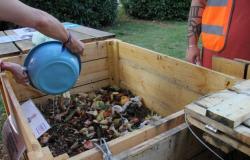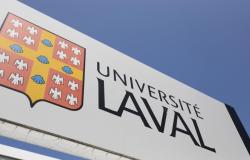For the Faculty of Medicine of Laval University, the presence of these externs demonstrates its desire to value and promote medical practice outside major centers. This collaborative agreement between the Faculty of Medicine of Quebec and the CISSS du Bas-Saint-Laurent is a continuation of the doctorate offered at the medical teaching pavilion of Laval University in Rimouski. There are currently 38 students continuing their studies there since fall 2022.
Social responsibility
For the dean of the faculty of medicine at Laval University, it is important to celebrate the successful completion of the project to create the ELI in Amqui and Rivière-du-Loup. It took almost a year of preparation before reaching this agreement.
“The opening of an integrated longitudinal externship in Amqui is tinged with social responsibility,” believes Dr. Julien Poitras, who adds that universities are currently experiencing a significant increase in the number of medical students. We have no choice but to train our students in environments that are more community and rural to be able to acquire skills to practice and work in these same environments.”
“We have data which shows that students who are trained in these environments close to the population will often integrate and decide to practice in these environments. It also allows us to meet all the needs of the population of Quebec.”
— Dr Julien Poitras
Difference from traditional day school
Unlike the traditional externship which takes place mainly in Quebec hospitals for medical students from Laval University, the integrated longitudinal externship offers a one-year learning period almost entirely in the region. This training offers early and ongoing clinical experience in family medicine, while providing access to other medical specialties.
Students also have the opportunity to follow their patients during their journey. In addition to the establishments in Amqui and Rivière-du-Loup, the hospitals in Rimouski, Matane and Notre-Dame-du-Lac have been welcoming students to ELI for several years now.
Amqui Hospital is one of the establishments in Bas-Saint-Laurent to offer the integrated longitudinal externship. (Johanne Fournier/Special collaboration)
In the path of a medical student, the ELI is done after the doctorate, which lasts five years, including three years of preclinical. “The advantages of the ELI are in terms of continuity of care because the student has the chance, throughout his course, to see patients again in the emergency room, in hospitalization, in the operating room, explains the director of the ELI at Laval University. They can follow up on their patients.”
According to Dr. Julie Fortin, the ELI also allows for continuity of learning since by remaining in the same environment for several months, doctors and staff get to know the externs better. For hospital staff, it becomes much easier to adapt to the student’s learning and help them progress at their own pace.
“There is also continuity with the community and for the sector, it is very stimulating because people are proud to have trained their future colleagues.”
First cohort in Amqui and Rivière-du-Loup
Serena Petry and Charles Poulin, who will complete a 20-week stay at the Amqui hospital at the end of May, are the first medical students from Laval University to complete their integrated longitudinal clerkship at the Amqui hospital. Previously, they had spent 14 weeks at the Grand-Portage Hospital Center in Rivière-du-Loup.
Serena Petry and Charles Poulin make up the first cohort to complete their integrated longitudinal externship in the Amqui and Rivière-du-Loup hospitals. (Johanne Fournier/Special collaboration)
Born in Port-Cartier on the North Shore, Charles is finishing his first year of day school. “I’m used to small environments where everyone knows each other. So the reality here didn’t surprise me. That’s what I was looking for and that’s why I chose to come to the region to get a taste of my future practice.” The future doctor therefore plans, unsurprisingly, to practice his profession in the region.
Since his arrival in Quebec in 2012, his colleague had always lived in the capital. “I had never really gone out to the region,” admits Serena Petry. I found that the ELI was a remarkable way to be able to go to the region and see if it was something that I would like. I don’t regret my choice at all. I like the welcome we received and the proximity to the doctors. They trust us, they get to know us and perhaps give us more responsibilities than an external could have in Quebec.
Once her university studies are completed, Serena Petry plans to practice family medicine in Rimouski or Chicoutimi.
A multidisciplinary internship
During their family medicine internship, the two externs cover different specialties, including pediatrics, pulmonology, cardiology and oncology. They also explore the areas of hospitalization, emergency, walk-in consultation and office work. They also work for four weeks in surgery, geriatrics and obstetrics.
“We make them touch everything that we can do in the region,” explains the medical education coordinator for La Matapédia. It allows them to acquire skills in different things.”
Dr. Sonia-Sandra D’Amours really enjoys the experience with her two externs. “It allows us to see the students progress and develop good bonds with them, something that we could not do when they came to do their internship which lasted for a period of four to six weeks. At the beginning, everyone was a little fearful because we thought it was a bigger load. In the end, everyone wins!”
Power of attractiveness
In the opinion of the president and CEO of the regional CISSS, training doctors in the region makes it possible to adapt medical training to the needs of people in the region and facilitates the recruitment of doctors. This last aspect is of capital importance when we know that, year after year, there is a shortage of 25 to 30 doctors in Bas-Saint-Laurent.
Dr Jean-Christophe Carvalho specifies, however, that it will take a few years before we see an impact on the recruitment of doctors. “It is not before seven years that we can see the first graduates being recruited,” corroborates Dr. Poitras. So right now, I have no idea what the impact will be.”
Dr. Carvalho nevertheless recognizes that this new agreement, combined with the presence of the medical pavilion in Rimouski, provides attractiveness. “I myself came to do my externship in Rimouski and I found myself here as a cardiologist. People come to do their internship in the region, get to know it and develop an interest in it. They become attached to the region and sometimes, they know their spouse there.”







